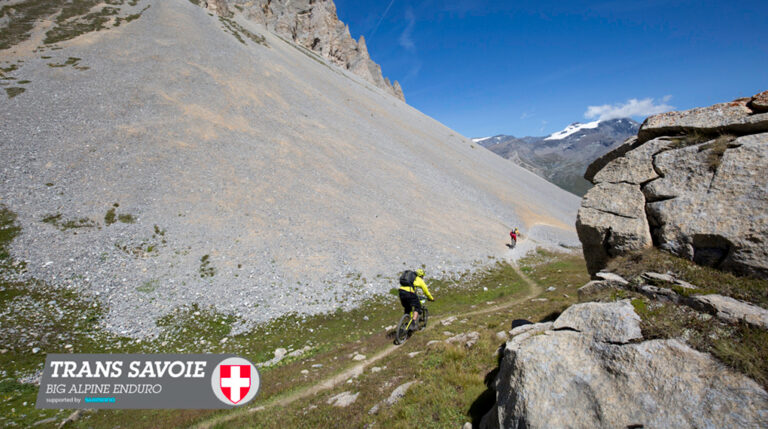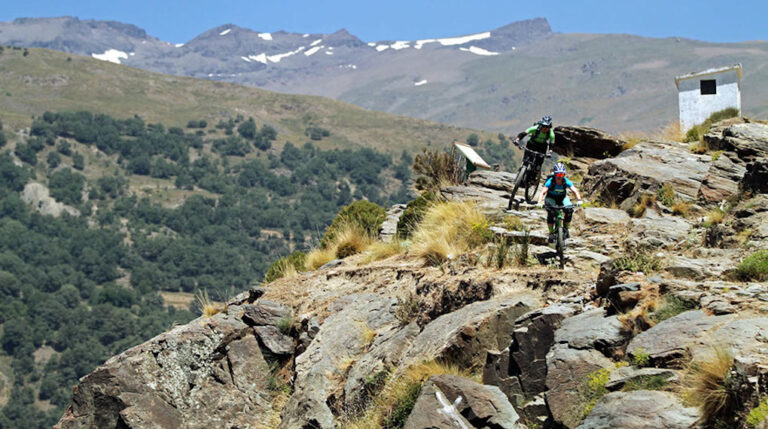
When does a race become and adventure? When does an adventure become an epic? During a week in the French Alps at the tail end of the summer, I was lucky enough to be involved with the now legendary Trans-Provence race…
DIRT ISSUE 143 – JANUARY 2014
Words by Nick Hamilton. Photos by Sven Martin and Sam Needham
“Ash Smith is a mad man”. This is a quote I could attribute to several of the people I spoke to over those amazing seven days and (for good reason) he truly tests the limits of his racers. Ash is the man who runs and has developed the Trans–Provence over past five years; a race from Sisteron to Menton in France. Originally living in Switzerland and working the 9 to 5 he had been taking trips down through the Alps to explore the endless trails and randonnees the mountains have to offer. He has an encyclopaedic knowledge of the trails due to obsessional map studying. In 2006 he took a trip further south to Provence and was immediately taken with the area. With the beach within reach, it’s not hard to understand the draw. He kept coming back and it was during one of the recce trips in 2008, where Ash was putting together a route for a guided trip, that the idea to make it into a race instead came about. At the time it didn’t seem like it would be that much harder to do; an itinerant trip with sections against the clock. The Trans–Provence was born.
In its first year there were 32 racers and this has steadily grown year on year until the fourth edition where numbers levelled off at 72. Ash reckons this is the maximum number without significantly changing the style of the event and has no plans to expand. I had read a lot about TP and had seen some amazing videos, but I wanted to know what it takes to actually put on such an event. It really is an amazing undertaking: a six day race, transporting 72 racers over 300km, moving locations and campsite every night as they get closer to the sea. Every racer needs to be fed and watered three times a day, their tents need to be collapsed and erected, their bags need to be in the right place at the right time. Their bikes and bodies need looking after daily, not to mention their spirits and safety. There is a lot that can go wrong, but thankfully, on balance, it all goes very right.
So how does it happen? At the top of the tree sits Ash, the grand chief, and as with most good men, there is a good woman with him, his wife Melissa. They plan, place orders and apply for permission from the regional governments and municipalities. The more I talked to Ash and the other staff, 32 in total, I began to realise that the story is not a list of facts, figures and logistics. It’s actually about them, the amazing people who work their arses off to make the race happen and allow the 72 competitors to get the most of those six days of incredible riding.
The staff can be broken down into Camp, Mountain, Support and Media. My small part of this tale was one of the mountain crew; as a team of four we were charged with timing the race. Rich (Norgate), Shaggy (John Ross), Henry (Norman) and myself rode a couple of hours ahead of the racers setting up the timing belises (a box of electronics) at the start of each stage and depositing one of us at the end of each stage. It was our responsibility to tag the racers ‘in’ at the finish and make sure they were all off the mountain. This meant very early starts and being the last ones off the mountain at the end of a very long day. We all revelled in it.
The other elements of the mountain staff are the trail tapers, the sweeper and the Doc, Andy. The course is marked out two days ahead of the race to minimise the chances of the any signs being taken down. Ewan, Emma and Chris ride the whole route and shuttle each other around attaching arrows and tape where necessary. The sweeper, Juan, was truly the last man on the mountain each day. He’s making sure the TP leaves no trace… doing it all on a hardtail!
The camp staff are responsible for housing and transporting the racers each day. They’re headed up by Leslie, the camp manager, who’s got an eye for detail combined with motherly compassion. She loves the event and has worked taping the course previously. “I’ve ridden it. I know how difficult it is, I have huge empathy for how hard it is on these riders”. When she rode it, she would be so tired that she wouldn’t want to ride the next day. Ash would just say “you’ll love this next stage” and she’d saddle up again knowing he was right.
Alongside her husband Pat, who coordinates other staff, they start breaking down the camp each morning as soon as the first tent becomes empty. Each morning the riders get uplifted to the trailhead in two waves of vans driven by Mansel, Dom, Emily, Bryan, Ross and Matt. Ideally by the time the second wave of shuttles are back in camp, all the tents are down and ready to be transported to the next site. It’s a one–run job with everyone involved, all the vans get loaded and they ship out.>>






